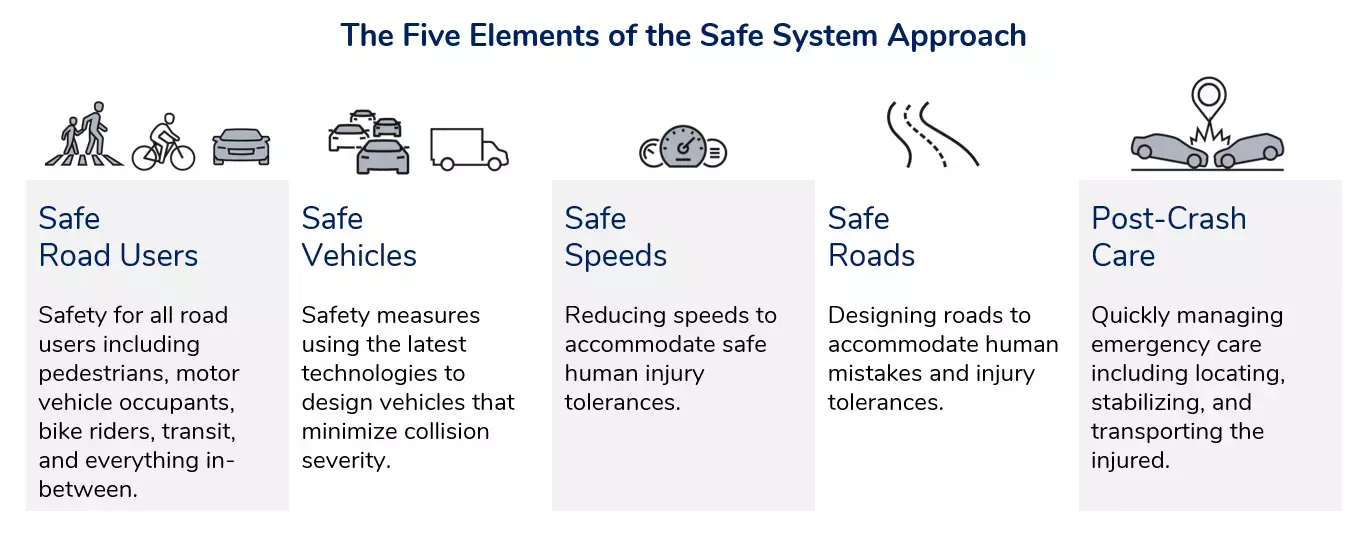
The Safe System Approach
Safe systems is a holistic approach to safety that has gained popularity in recent years, especially in the field of transportation safety. It is based on the recognition that people will make mistakes, but the consequences of those mistakes can be mitigated through the design of the systems in which they operate.
The Safe System Approach was initially developed in the 1990s by the Swedish road safety expert Claes Tingvall. It has since been promoted by the United Nations, World Health Organization, National Highway Traffic Safety Administration, Euro NCAP, and many safety experts worldwide.
At the core of the methodology is the belief that everyone has the right to be safe while traveling, whether by car, bike, or foot. The paradigm recognizes that safety is a shared responsibility that requires cooperation from all stakeholders, including policymakers, road designers, vehicle manufacturers, and road users themselves.
This approach for transportation safety focuses on five key elements: safe road users, safe vehicles, safe speeds, safe roads and roadsides, and post-crash care. Safe road users require education and training programs that promote safe driving, biking, and walking habits. Safe vehicles involve designing cars and other vehicles with features that protect passengers and pedestrians, such as advanced airbags, adaptive safety, and crash avoidance systems. Safe speeds require setting speed limits that are appropriate for the road and the surrounding environment, as well as designing roads and vehicles to ensure that they can withstand crashes without causing serious injury or death. Safe roads and roadsides involve designing roads and sidewalks that are safe and forgiving, with adequate lighting and clear signage. And finally, post-crash care is concerned with managing emergency care including locating, stabilizing, and transporting the injured.
One of the strengths of the Safe System Approach is its focus on system-wide changes rather than individual behavior change alone. By designing systems that are inherently safe, the risk of crashes and injuries can be reduced, even when individuals make mistakes. Another advantage is that it can be applied to a wide range of safety issues beyond transportation, including workplace safety and public health.
This model is not a panacea for all safety problems, but it provides a useful framework for understanding and addressing the complex and multifaceted nature of safety. By working together to design safe systems, we can create a world in which everyone can travel safely, no matter their mode of transport.

To learn more about the Safe System Approach, please visit Making our Roads Safer through a Safe System Approach from the U.S. Department of Transportation

Mark Brown
Mark is the Product Marketing Manager at Humanetics Safety and works closely with Engineering and Sales to develop and refine content that is both useful and informative for our industry. With over two decades of experience in crash test dummy product Quality, Technical, Sales, and Marketing, Mark produces a wide range of media and publications including our service bulletins, webinars, editorial articles, and contributes to our marketing collateral.